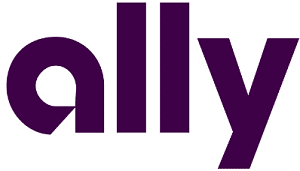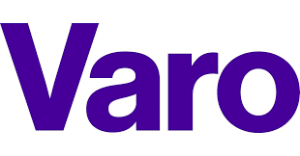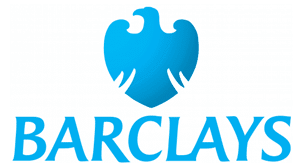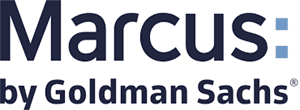Editorial Note: We earn a commission from partner links on Doughroller. Commissions do not affect our authors’ or editors’ opinions or evaluations. Learn more here.
Saving money in college is tough when you’re not employed or working part-time. But it’s not impossible to do, and it may be just the time to strike with rising interest rates.
A 2019 study shows less than half of college students save money from their paychecks. But that can’t be from a lack of places to save cash. We found eight of the best savings accounts for college students with no monthly fees, great savings rates, and mobile access.
Best Savings Accounts for College Students
1. SoFi Savings and Checking

Savings Account
Member FDIC
APY
4.60%
Min. balance for APY
$0
Our Rating: 4.7
2. Ally Savings

Savings Account
Member FDIC
APY
4.20%
Min. balance for APY
$0
Our Rating: 4.5
3. Cap One 360 Performance Savings

Savings Account
Member FDIC
APY
4.25%
Min. balance for APY
$0
Our Rating: 4.4
4. Varo Savings

Savings Account
Member FDIC
APY
5.00%
Min. balance for APY
$0
Our Rating: 4.4
5. Chime

Savings Account
Member FDIC
APY
2.00%
Min. balance for APY
$0
Our Rating: 4.3
6. Discover® Bank Online Savings

Savings Account
Member FDIC
APY
4.25%
Min. balance for APY
$0
Our Rating: 4.3
7. Barclays Online Savings

Savings Account
Member FDIC
APY
4.35%
Min. balance for APY
$0
Our Rating: 4.2
8. Marcus Online Savings Account

Savings Account
Member FDIC
APY
4.40%
Min. balance for APY
$0
Our Rating: 4.2
How to Monitor Your Savings Account
The easiest way to keep tabs on your savings account is by using the mobile app, which all of the options we’ve shown you today have. Savings accounts don’t necessarily require a lot of activity on your part, especially if you set up direct deposits or roundups. It can also be helpful to set up automated alerts for your savings account, which will send you a text, email, or push notification when certain things happen to your account. For example, you can get alerts when you get a direct deposit, or when your balance drops below a certain amount.
Paper or electronic statements can help you monitor the transactions on your account, which can help you analyze your saving habits; however, for convenience, you will probably want to opt for the mobile app.
Why College Students Should Open a Savings Account
Even if you’re not working, it’s a good idea to open a savings account as a student for several reasons. First, it can be beneficial in the future to have a longstanding relationship with a bank or a credit union, which you establish by having open accounts over several years. A lengthy relationship with a bank may help you access capital or other financial products in the future.
Second, even contributing a little bit can make a big difference in your financial future, largely due to a tool called compound interest, which is the interest you earn on a principal balance in addition to your interest earned. It means the more you save, the more you earn. Because of this snowball effect, starting your savings early, even if it’s not much, can make thousands of dollars of difference.
Say, for example, at age twenty, you begin saving with an initial investment of $100. Throughout school and the rest of your career, you are able to contribute $25 per month to your savings account with an APY of 0.11% (the national average a the time of this writing). By the time you are sixty years old, you will have saved nearly $13,000. Conversely, if you save the same amount starting at age thirty, by the age of sixty, you’ll have less than $10,000. These are conservative numbers – a small initial investment and a manageable monthly contribution. But those ten years make a few thousand dollars worth of difference. No one expects college students to put away hundreds of dollars every month, but building small habits makes more of a difference than you may think.
What To Look For in a Savings Account
There are a few features to look for in a savings account, most of which are featured in all of our recommendations above. No fees are a huge plus, especially as a student when you may not have a steady and consistent stream of money coming in. You don’t want to be charged for using or accessing your own money. For the same reasons, you don’t want an account that requires you to have a high minimum deposit or maintain a high minimum balance. For obvious reasons, you want to look for the highest APY you can find – the higher the APY, the more interest you earn on your money, and the faster your interest compounds.
Lastly, consider accessibility and ease. While you shouldn’t be aiming to make a lot of withdrawals or transactions from your savings account, you don’t want to have to jump through hoops to access your own money. Look for well-rated mobile apps and accounts that give you access to a good amount of convenient ATMs. It’s also not a bad idea to open a savings account where you hold your checking account to help you keep things organized.
What Do You Need to Open a Savings Account?
To open a savings account on your own, you need to be at least eighteen years old, though your parent or guardian can help you open an account when you’re younger, and you may be grandfathered in when you turn eighteen.
You also need some form of identification, such as a driver’s license or state ID, birth certificate, social security card, or passport. You will also need to show proof of your address in the form of a driver’s license or state ID, lease agreement, utility bill, credit card, or bank statement (if you already have another bank account). If you are a student and opening a student account, you will likely need proof of acceptance at your school or a school ID.
None of the accounts we have discussed above require a minimum deposit to open; however, it’s a good idea to open an account when you have at least a few dollars to put in. You’ll at least be earning some interest, and some accounts will require you to eventually deposit to prevent your account from closing.
Final Thoughts
Starting to save, even in college, is not impossible, and it’s a good move if you can do it. The 5-10 years you may gain from starting in your early twenties can make thousands of dollars worth of difference by the time you are ready to retire.
It can seem intimidating at first and feel pointless if you’re not able to contribute hundreds every month, but putting away what you can will help you build habits for when you do have a little more money. Start your research with our recommendations, but ultimately, make the decision that’s best for you.

